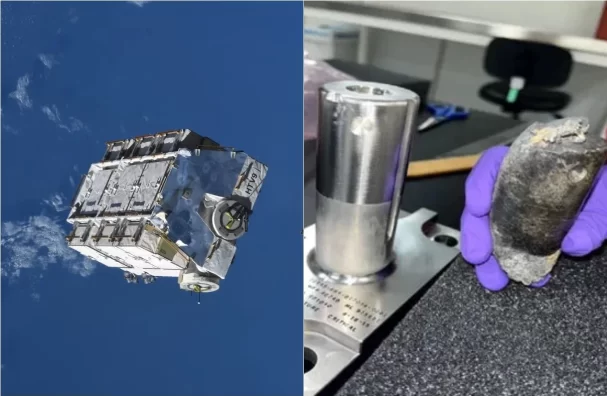
In March, a Florida homeowner reported a peculiar incident. A small, hand-sized chunk of metal had crashed into his property. Weighing less than two pounds, the object had a cylindrical shape and was made of a metal alloy. Its origins remained uncertain until NASA stepped in to investigate.
NASA, upon hearing about the incident, quickly arranged to have the object brought to Kennedy Space Center for examination. NASA’s experts performed a materials analysis and compared the object’s dimensions and features to hardware released from the ISS.
Based on these examinations, NASA concluded that the debris was a stanchion from the NASA flight support equipment used to mount the batteries on the cargo pallet. The object was made of Inconel, a metal alloy, and measured 4 inches in height and 1.6 inches in diameter.
The origin of the debris can be traced back to a pallet of nickel hydride batteries that were jettisoned from the ISS back in March 2021. The batteries had been replaced with new lithium-ion ones, and the old ones, along with their support equipment, were discarded. The entire pallet weighed about 5,800 pounds, and NASA expected it to burn up upon reentry into Earth’s atmosphere. However, this small piece survived.
To avoid such incidents in the future, NASA’s ISS teams are conducting a detailed investigation of the jettison and reentry analysis of this event. This will help update future modeling. NASA’s engineering models estimate how objects heat up and break apart during atmospheric reentry. These models will be updated based on the findings from this incident.
Debris from launched rockets and deorbiting hardware poses a real threat if it survives reentry and reaches the ground. NASA, committed to operating responsibly in low-Earth orbit, is taking measures to mitigate as much risk as possible to protect people on Earth when space hardware must be released.
